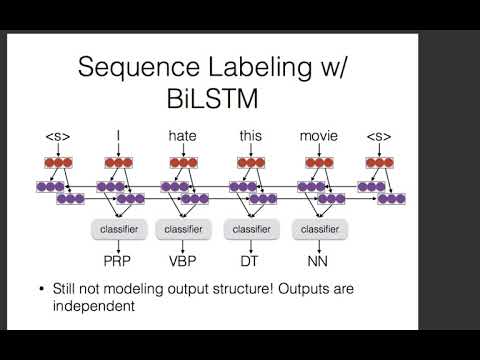Description:
Explore structured prediction basics in this comprehensive lecture from CMU's Neural Nets for NLP 2018 course. Delve into various prediction types, understand the importance of modeling output interactions, and learn about sequence labeling. Discover training methods for structured models, including local normalization and the structured perceptron algorithm. Compare perceptron and global normalization approaches, and examine the use of hinge loss in classifiers. Investigate cost-augmented hinge loss, costs over sequences, and cost-augmented decoding for Hamming loss. Conclude by exploring solutions for sampling mistakes during training, as presented by Ross et al. in 2010.

CMU Neural Nets for NLP - Structured Prediction Basics
Add to list
#Computer Science
#Artificial Intelligence
#Neural Networks
#Natural Language Processing (NLP)
#Machine Learning
#Sequence Labeling